Why Are More And More Cell Phone Brands Introducing Dual-Port Chargers? | ZONSAN
A long, long time ago, chargers for electronic products were complimentary with the purchase of the machine, and the voltage and interface were not common among different devices. Nowadays, most consumers have several digital products at home, which makes the former mainstream single interface charger obsolete.
Third-party digital brands began to launch dual-port, or even multi-port chargers early, and as the original cell phone brands, in fact, only recently joined the ranks of dual-port chargers. Apple, Huawei, Xiaomi, VIVO and other cell phone brands have launched dual-port chargers, compared to the traditional single-port chargers, they support single-port high-power output, dual-port simultaneous fast charging, and even simultaneously take into account the private protocol and universal PD fast charging, can be described as full of practicality.
New digital products are constantly on sale, old chargers are constantly being phased out, and cell phone brands such as Samsung, Apple, and Huawei are gradually eliminating their charger distribution, giving the dual-port fast charging market an immeasurable amount of hard demand. Watching third-party digital brands create one explosive fast charger after another, cell phone brands also began to sit back and began to launch the original dual-port charger, with more stable quality, compatible with their own private protocols and other advantages, the market ushered in a piece of praise, but also more cell phone brands to join the dual-port charger market. Let me introduce you to these cell phone original dual-port chargers have what selling points.
Apple
In June 2022, Apple announced two 35W dual-port chargers at WWDC22, two different models, one with a new flat look and the other a classic Apple charger family design.
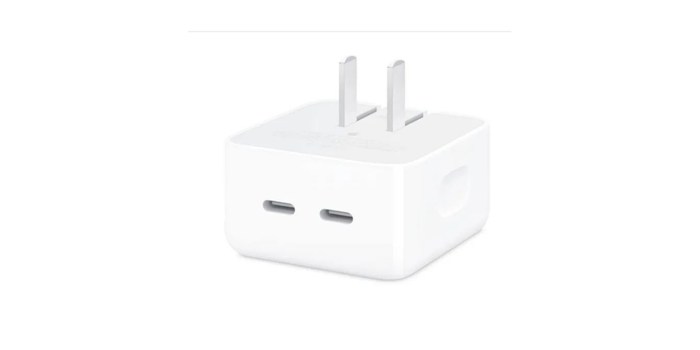
The Apple 35W dual USB-C charger (flat model) looks completely different from the Apple charger family, using a "side plug" structure design, with both sides recessed for easy hand-holding and pinching, and folding pins for more portable travel, but the pins are not removable.
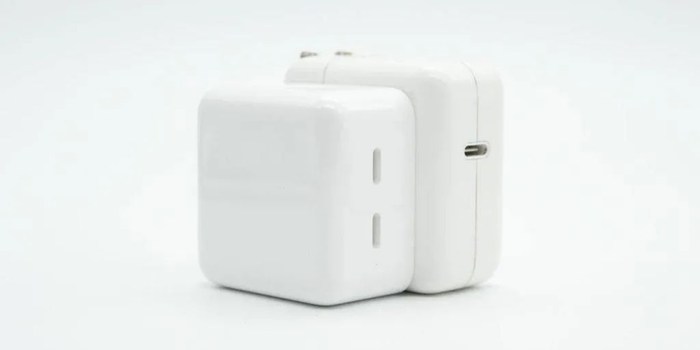
Measured Apple 35W dual USB-C charger dimensions were 49.38mm * 28.01mm * 49.43mm, volume of about 68.37cm³, power density of about 0.51W/cm³, weight 104.3g, Figure Apple 35W dual USB-C charger compared to Apple 30W single-port charger.
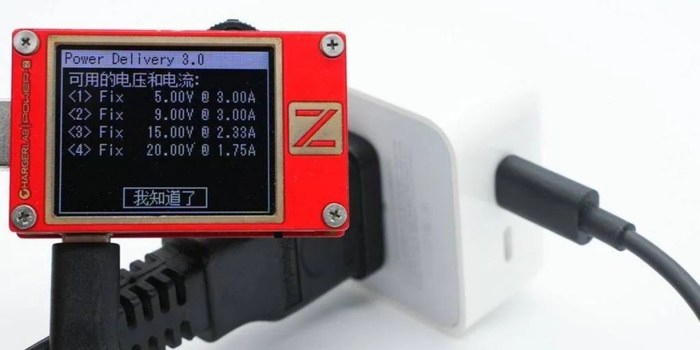
The charger model A2579, supports 100-240V ~ 50/60Hz global grid use, supports power blind plug function, any single port use can get 35W maximum output, can provide 5V3A / 9V3A / 15V2.33A / 20V1.75A four fixed voltage PDO, the charger is pure PD charger, does not come with other fast charging protocol.
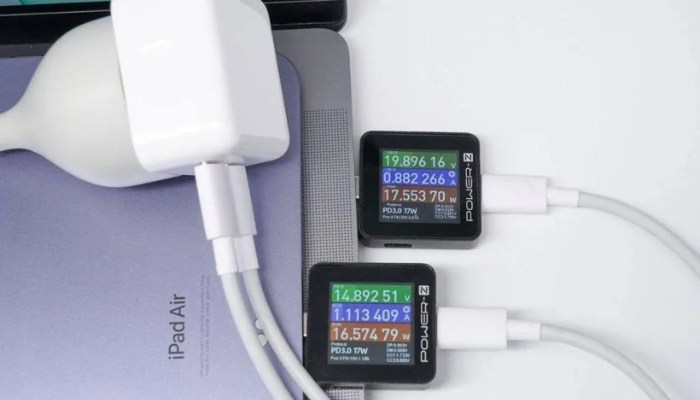
Two USB-C outputs can meet the simultaneous fast charging needs of two devices, and the power is distributed according to the 17.5W+17.5W strategy for simultaneous fast charging of dual devices.
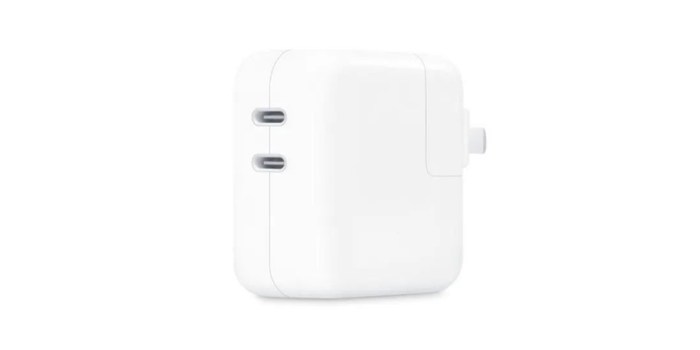
Another Apple 35W dual USB-C charger (classic model), from the shape of the Apple family can be seen in the usual design, the square appearance of the left and right ultrasonic fit mold, the pin using Apple's unique removable travel replacement pins, a very classic design, two USB-C interface placed vertically in front.
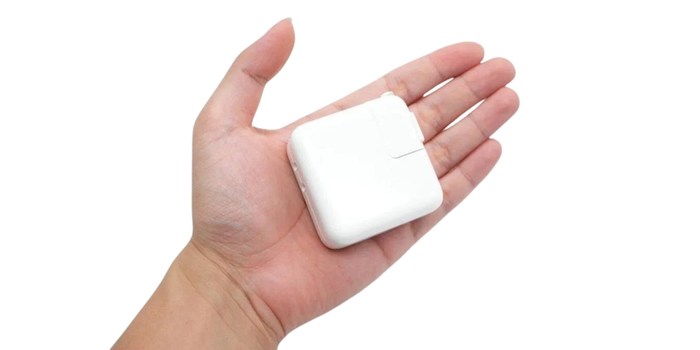
Measured dimensions are 56.06mm * 28.59mm * 56.01mm, volume is about 89.77cm³, power density is about 0.39W/cm³, weight 116g.
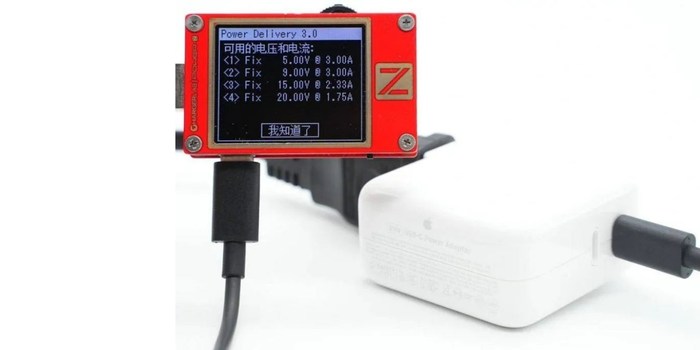
Apple 35W dual USB-C charger (classic model) model A2676, support 100-240V ~ 50/60Hz global grid use, support power blind plug function, any single port use can provide 35W maximum output, support 5V3A / 9V3A / 15V2.33A / 20V1.75A four fixed voltage output, the charger is pure PD charger, does not with other fast charging protocols.
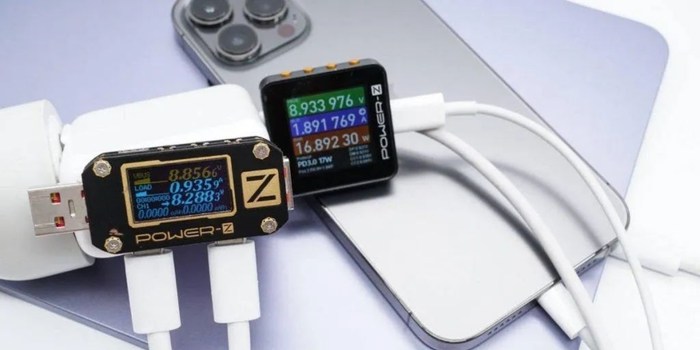
The dual USB-C ports are also used to charge iPhone 13 Pro Max and iPad Air 5, with both ports outputting 9V, 16.89W and 8.29W respectively, and both devices entering fast charging mode.
Huawei
Huawei has launched two "dual-port" chargers, one with a square design in the form of 1A1C and the other with a bar-shaped column in the form of AorC +A, both of which are GaN chargers.
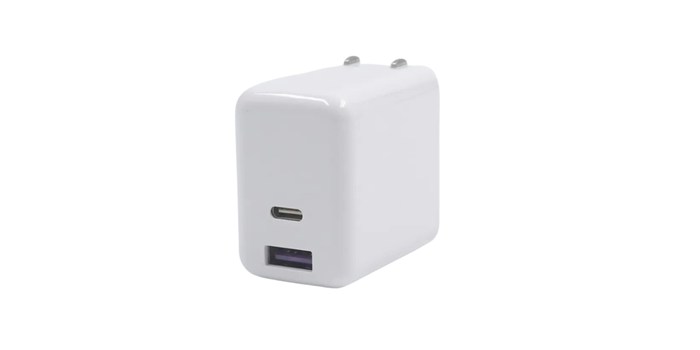
In September 2020, Huawei launched the 65W 1A1C GaN charger with a glossy all-white square case and rounded corners. The output port configuration has one USB-C output port and one purple USB-A output port, supporting Huawei's private Super Fast Charging protocol and PD universal fast charging protocol.
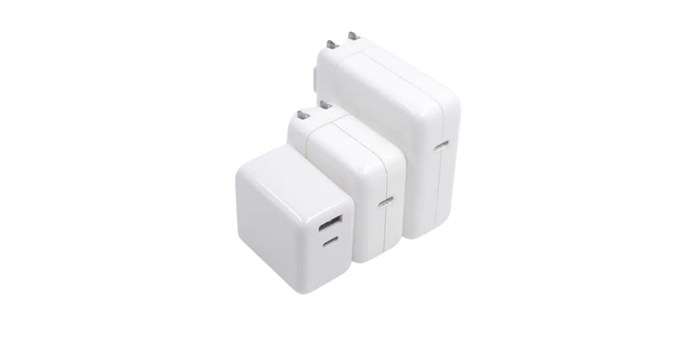
The three dimensions of the charger are 46.34mm * 45.32mm * 30.99mm, with a volume of 65.08cm³, power density of 1W/cm³, and weight of 99g. Adding several chargers for volume comparison, from left to right are Huawei 65W GaN charger, Apple 30W charger, and Apple 61W charger.
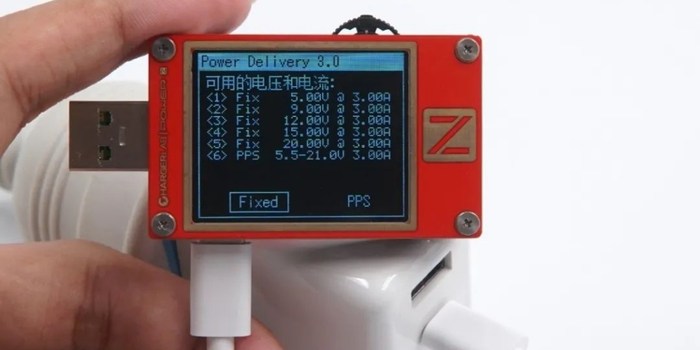
USB-C interface supports 30W Huawei super fast charging and 60W PD universal fast charging, USB-A supports 40W Huawei super fast charging, both interfaces support QC2.0, FCP, SCP fast charging protocol. USB-C with 5V3A / 9V3A / 12V3A / 15V3A / 20V3A five fixed voltage PDO, but also with 5.5-21V3A a group of PPS voltage subset.
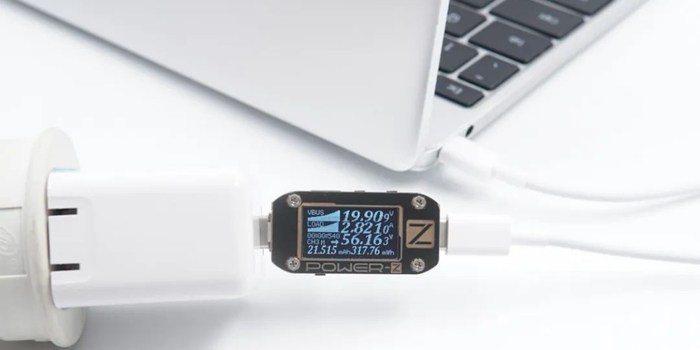
Macbook Pro 13 supports USB PD fast charging protocol, using USB-C interface to charge Macbook Pro 13 with 19.87 2.77A 55.18W, handshake 60W PD fast charging.
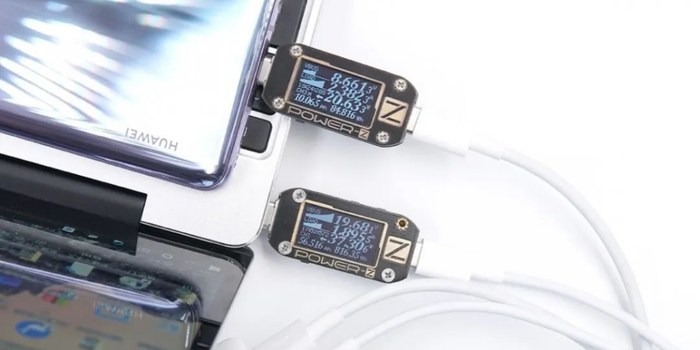
USB-C charges the MateBook at 19.68V 1.89A 37.30W, while USB-A charges the Huawei Mate30 at 8.66V 2.38A 20.63W. The charger supports dual-port simultaneous output, and both are in fast charging state.
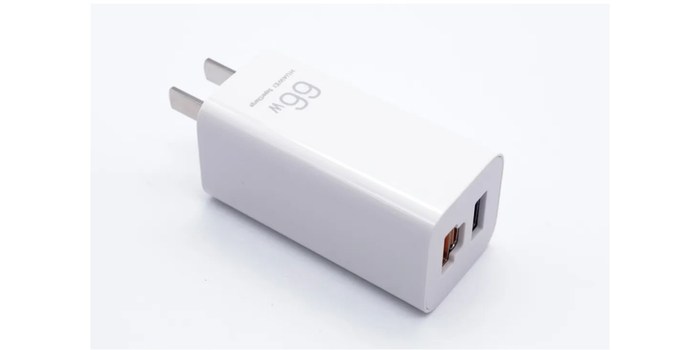
In July 2021, Huawei again launched the 66W Super Fast Charger, which addresses both private protocol and universal PD fast charging, with three physical outputs and supports two output functions. In addition to supporting 66W Huawei Super Fast Charger, it also supports the most mainstream 65W USB PD fast charger in the market.
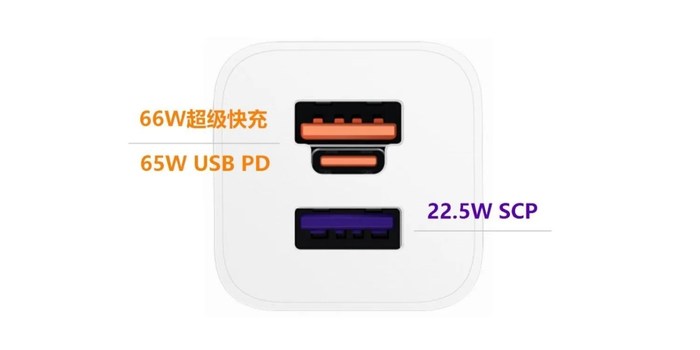
Huawei 66W GaN multi-port super fast charger is equipped with three very special AorC + A interfaces, the orange USB-C and orange USB-A1 interfaces fit closely together in the same opening, sharing the same output circuit, because the two orange interfaces are too close to each other to insert two data cables, physically avoiding the safety problems caused by multiple devices sharing one way, strictly speaking, it is also a Dual-port charger.
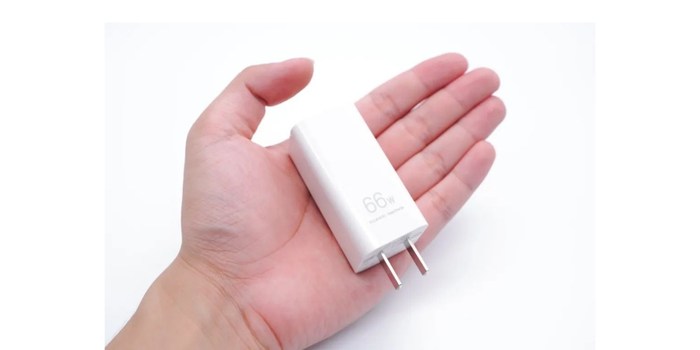
The charger is designed with fixed pins, and the power supply range is 200-240V 50/60Hz for domestic areas. 61.97mm * 30.86mm * 30.94mm without pins, with a volume of about 59.16cm³, power density of about 1.11W/cm³, and weight of 104.8g.
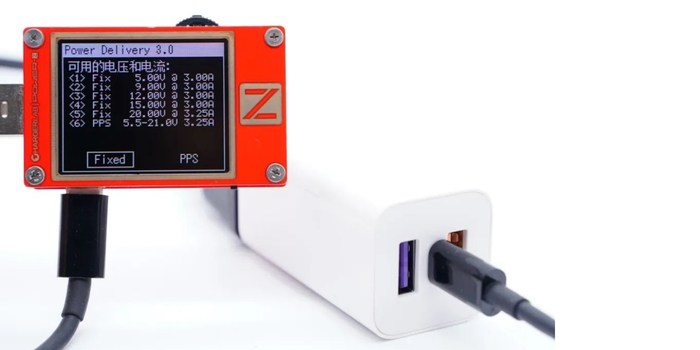
The Orange USB-C supports 40W Huawei Super Fast Charging and the Orange USB-A1 supports 66W Huawei Super Fast Charging. In addition, the Orange USB-C interface is also compatible with the USB PD fast charging standard, supporting six fixed voltage output stages of 5V3A / 9V3A / 12V3A / 20V2A / 15V3A / 20V3.25 with PPS voltage subset function and PD fast charging with a maximum output power of 65W. The purple USB-A2 interface supports three fixed voltage output stages of 5V2A / 5V4A / 10V2.25A, with a maximum output power of 22.5W.
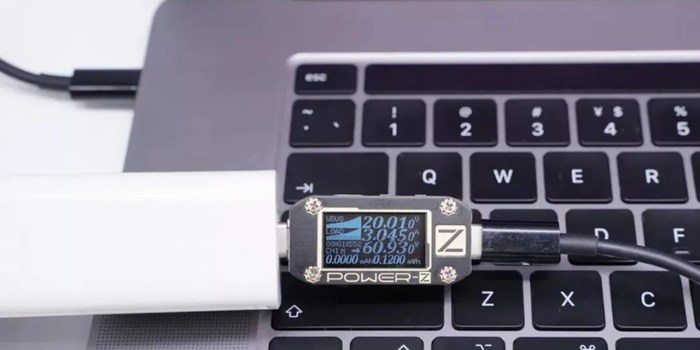
In real-world testing, USB-C charging the MacBook Pro 16 provides 60W+ of fast charging power and supports the USB PD fast charging standard.
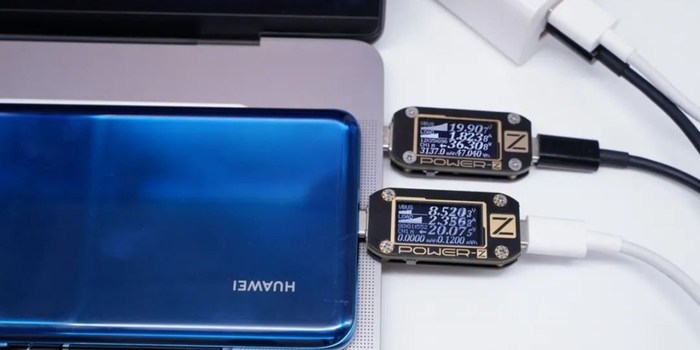
Charging the MacBook Pro 16 with USB-C delivers 36.30W, while charging the Huawei P40 Pro with purple USB-A delivers 20.07W, both ports are in fast charging mode.
Xiaomi
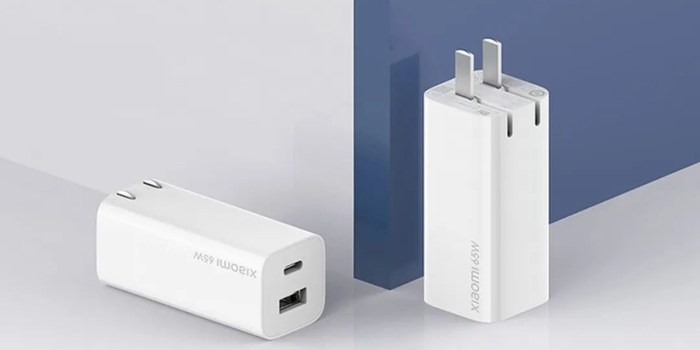
In June 2021, Xiaomi launched 65W 1A1C dual-port GaN charger, model number AD652G, which is very similar to Xiaomi 65W GaN charger (AD65G), with the same GaN solution in the mainstream structure of bar-shaped column. The difference is that the Xiaomi 65W 1A1C GaN charger has dual output ports and adopts foldable pins.
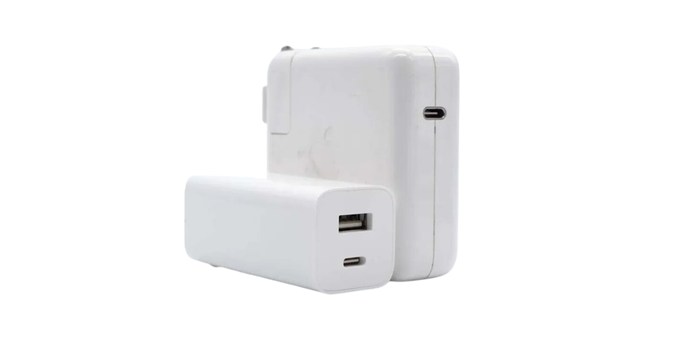
Xiaomi 65W 1A1C dual-port GaN charger has three dimensions of 71.78mm * 30.87mm * 30.93mm, volume of 68.54cm³, power density of 0.94W/cm³, and weight of 104.1g. The charger shown in the comparison is Apple 61W single-port charger.
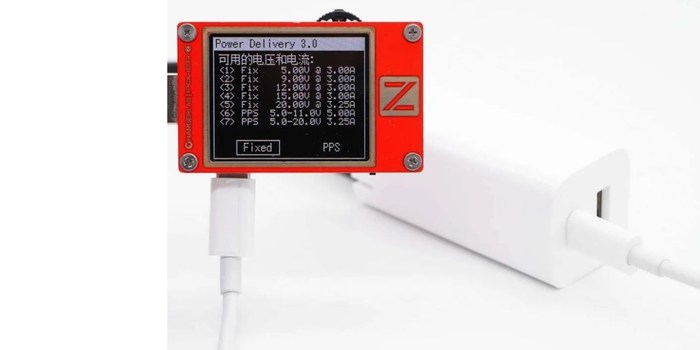
It reads USB-C PDO telegrams and supports five fixed voltage steps of 5V3A / 9V3A / 12V3A / 15V3A / 20V3.25A with two PPS voltage subsets of 5-11V5A / 5-20V3.25A, and both ports support QC3.0 fast charging protocol.
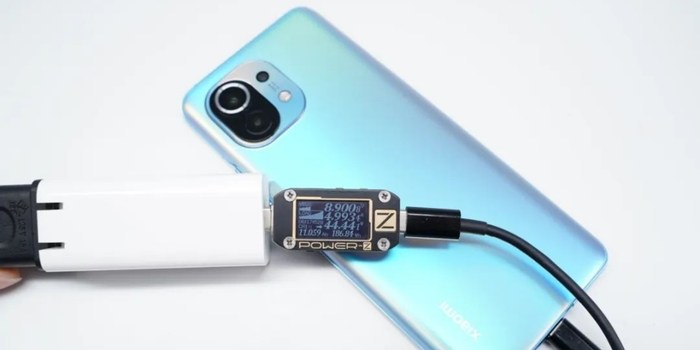
The USB-C port supports 55W Xiaomi private fast charging, which was measured for charging Xiaomi 11 with 8.90V 4.99A 44.44W, successfully triggering Xiaomi private fast charging.
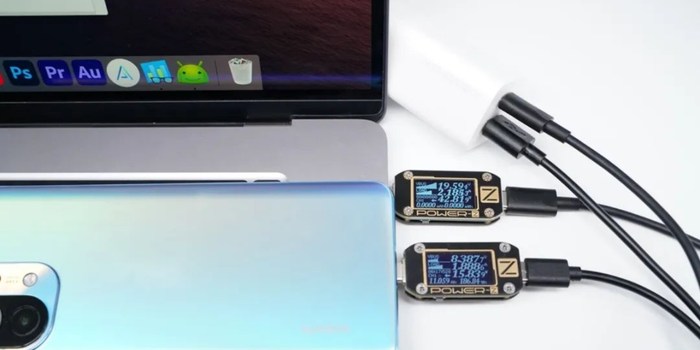
Using USB-C to charge the laptop, the power is 42.81W, while using USB-A to charge the Xiaomi 11, the power is 15.83W. The charger supports dual-port simultaneous output and dual-device simultaneous fast charging.
VIVO
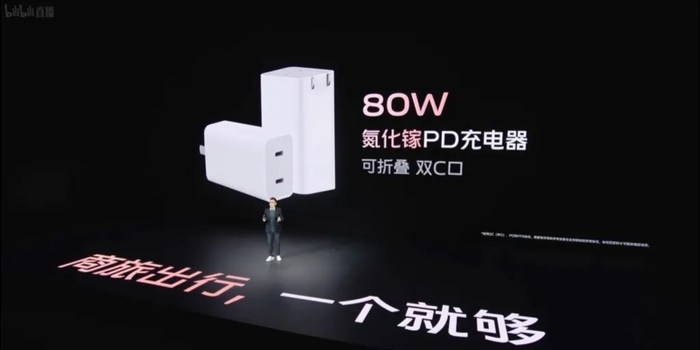
On April 11, 2022, Vivo released its first folding screen vivo X Fold and brought a new dual USB-C 80W charger. The shell white glossy finish, pins with folding design, support 100-240V ~ 50/60HZ global voltage power supply, with two USB-C output ports.
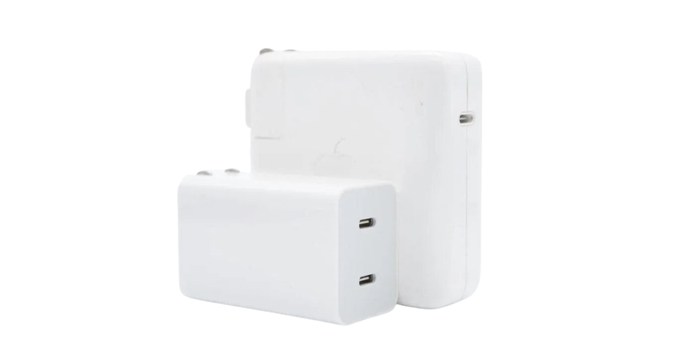
vivo 80W dual USB-C charger dimensions are 63.95mm * 31.11mm * 40mm, volume 79.58cm³, power density of about 1.01W/cm³, weight 122.3g, the picture as a comparison is Apple 67W single-port charger.
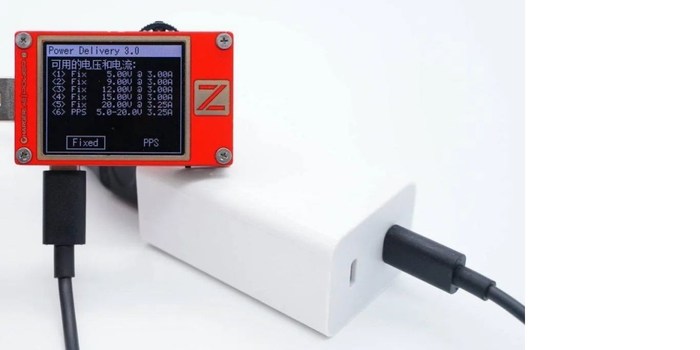
Both USB-C support power blind plugging, individually both support 5V3A / 9V3A / 12V3A / 15V3A / 20V3.25A five groups of fixed voltage output, and 3.3-20V3.25A a subset of PPS voltage.
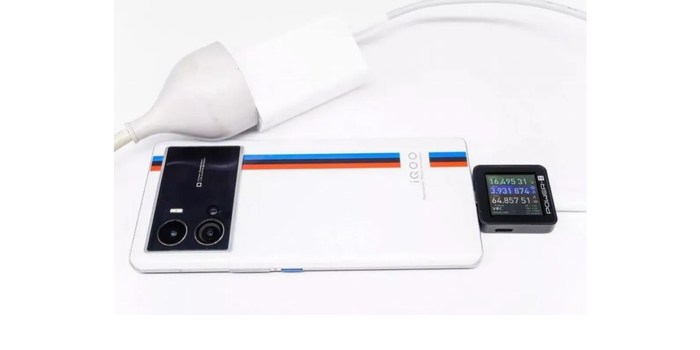
Using the charger to charge the iQOO 9 Pro, the power at the input is about 64.857W, which is already at the fast charging power of the device, and the single port use supports 65W PD fast charging output.
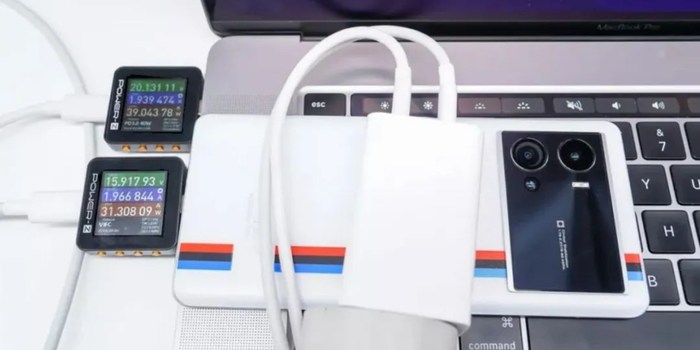
Charging both the laptop and the phone, the charging power of the phone is around 30W and the power of the computer is around 39W, dual devices are fast charging at the same time.
ZONSAN Summary
No matter single-port charger or dual-port charger, they are all a branch of the fast charging market, which is the result of market segmentation and proves that the global fast charging market tends to be red-hot. In terms of universal fast charging, each dual-port charger is compatible with PD universal fast charging, which can provide high-power charging for large digital devices such as laptops when used in a single port, and dual-port charging at the same time, and can do dual devices together with fast charging, the best of both worlds.
While mainstream digital products are compatible with USB PD fast charging, most cell phone brands use their own private fast charging protocols and cannot reach higher power using PD fast charging. The original dual-port chargers launched by cell phone brands generally include support for private fast charging protocols, and the original products have an absolute compatibility advantage over third-party brand chargers, so cell phone brands have entered the market to compete with third-party brands for market share.
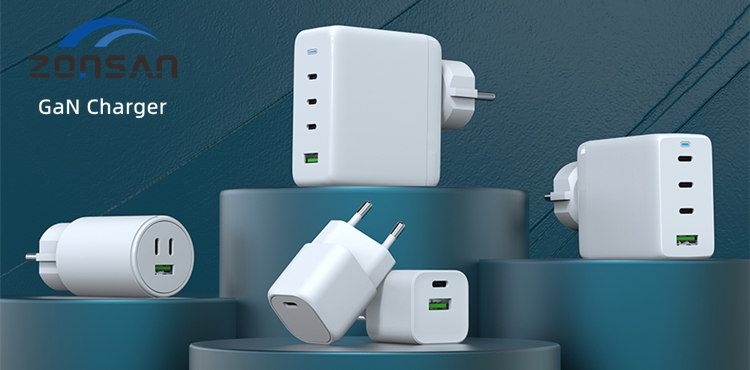
OEM Phone Charger Recommendation
The Advantage of ZONSAN's charger product:
1. overcurrent protection
2. input overvoltage protection
3. outut overvoltage protection
4. short circuit protection
5. overcharging protection
6. temperature protection
The Advantage of ZONSAN's charger product:
1. overcurrent protection
2. input overvoltage protection
3. outut overvoltage protection
4. short circuit protection
5. overcharging protection
6. temperature protection

Read More
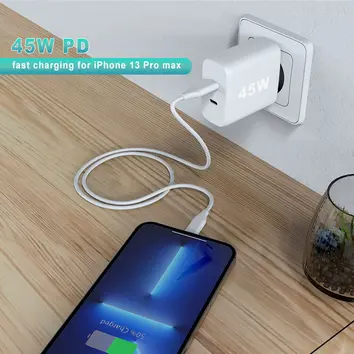
Read More

Read More